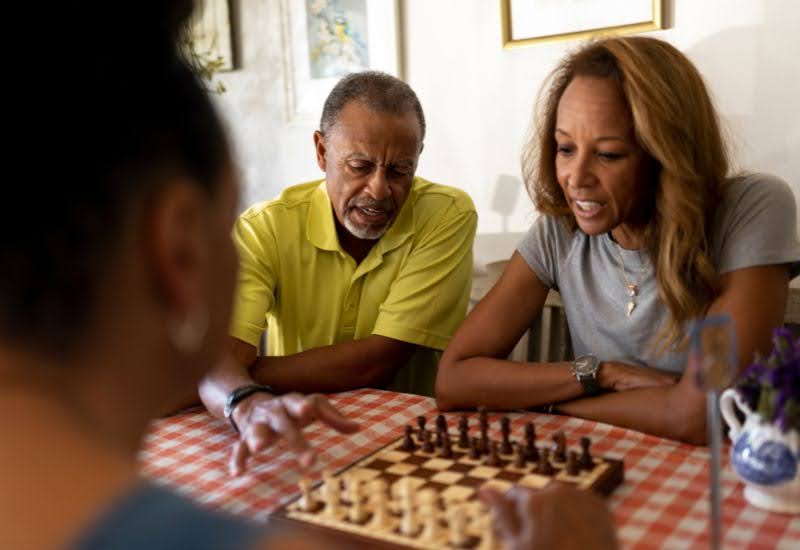If you’re new to chess, setting up the board might feel like arranging a cast for an epic story—every chess piece has a purpose, a place, and an important role. Just like putting your rooks, knights, and pawns in place sets the stage for a great game, following the setup rules ensures a balanced, fair match. In this guide, we’ll show you the ropes so that arranging your chess pieces on a chessboard becomes second nature.
Here’s how you can set up a chessboard with accuracy, logic, and maybe a little fun along the way!
Step 1: Orienting the Chess Board

First things first, let’s talk about board orientation. If you’re setting up with a partner, make sure the board is centered between you two.
- White square on the right – This is the golden rule in chess setup. When you look down at the board, the bottom right square for each player should be a white square.
- Notation alignment – For boards with labels, ensure the letters ‘a’ through ‘h’ line up horizontally at the bottom, from left to right, with ‘1’ to ‘8’ moving vertically from the bottom to the top. This will help you track moves correctly.
Step 2: Placing the Pawns

Now, let’s start building your defense line with the pawns.
- Place eight pawns on the second rank (second row from each player’s side).
- Create a defensive wall – This row of pawns forms a shield for the more valuable chess pieces behind. In chess, pawns are often the first line of offense and defense, so don’t underestimate their strategic power!
Fun fact: Pawns can move one or two squares forward initially and one square after that. They capture diagonally, which makes them unique among the chess pieces.
Step 3: Setting the Rooks

Next up, let’s position the guardians of the corners – the rooks.
- Corner Placement – Place a rook in each corner of the back row for each player.
- Rook’s Role – Rooks can move any number of squares horizontally or vertically, making them powerful pieces when they’re not blocked. They serve as strong defensive and offensive tools, especially when positioned to protect other chess pieces or control open lines.
Pro Tip: Rooks become especially powerful in the endgame, so try to keep them safe and centralize them when other pieces clear out.
Step 4: Positioning the Knights

Here’s where things get interesting – the knights.
- Place knights beside the rooks on each side of the back row.
- Knight’s Special Movement – Knights have a quirky move pattern, forming an L-shape, where they jump two squares in one direction and one square perpendicular. This unique ability to “jump” over chess pieces makes them excellent for surprise attacks or tricky maneuvers.
Fun Insight: Because of their special movement, knights are unpredictable, making them valuable tools for disrupting an opponent’s strategy early on.
Want to take your chess skills to the next level?
Assess your chess progress and get personalized coaching with Caissa, an AI-powered chess coach designed to personalize your learning experience. With Caissa, you can track your knowledge, measure improvement monthly, and receive targeted strategies to refine your game. Perfect for beginners and advanced players alike! Check out Caissa by CircleChess and get ready to level up your chess skills!
Step 5: Placing the Bishops

Let’s move to the bishops, the diagonally moving strategists.
- Place bishops next to knights on each side of the back row.
- Bishop’s Range – Bishops move diagonally across any number of squares, which makes them perfect for controlling long diagonals and adding depth to your strategy.
Fun Fact: Since one bishop always stays on white squares and the other on black, they cover different diagonals. This complementing pattern gives players strong control over board space when used effectively.
Step 6: Positioning the Queen
Now it’s time to position the queen—the most powerful chess piece in chess.
- Color Match – Place the queen on her matching color square. The white queen goes on a white square, and the black queen on a black square.
- The Queen’s Power – The queen can move in any direction—vertically, horizontally, or diagonally—for any number of squares. Because of this versatility, the queen often becomes a key piece in both attack and defense.
Tip: Avoid exposing the queen too early in the game, as opponents often target her to gain an advantage.
Step 7: Positioning the King
Finally, place the most important chess piece of all—the king.
- The King’s Position – Place the king on the remaining square next to the queen on the back row.
- The King’s Movement – Unlike the queen, the king can only move one square in any direction. However, the king’s safety is critical, as the game ends if the king is captured (checkmate).
Strategy Note: In most games, players “castle” early on, moving their king to a safer position by placing it behind a row of pawns.
Getting Ready to Play
Now that your chess board is set up, you’re ready to play! Arranging the board becomes second nature with practice, and understanding each chess piece’s placement helps develop your strategy. A proper setup gives every game a balanced and exciting beginning.
Remember: A well-prepared board creates a fair battleground. Keep practicing, experiment with new strategies, and enjoy the mind-stretching world of chess!
Want to sharpen your skills even more? Check out the Caissa School of Chess by CircleChess—a complete curriculum with live classes led by world-class Grandmaster coaches who’ve trained chess prodigies like Gukesh, Arjun, Raunak, and Nihal. You’ll get peer-to-peer learning, supplementary sessions to boost foundational skills, regular assignments, and even practice tournaments. Join Caissa School of Chess and connect with a community committed to growth and mastery in chess!





